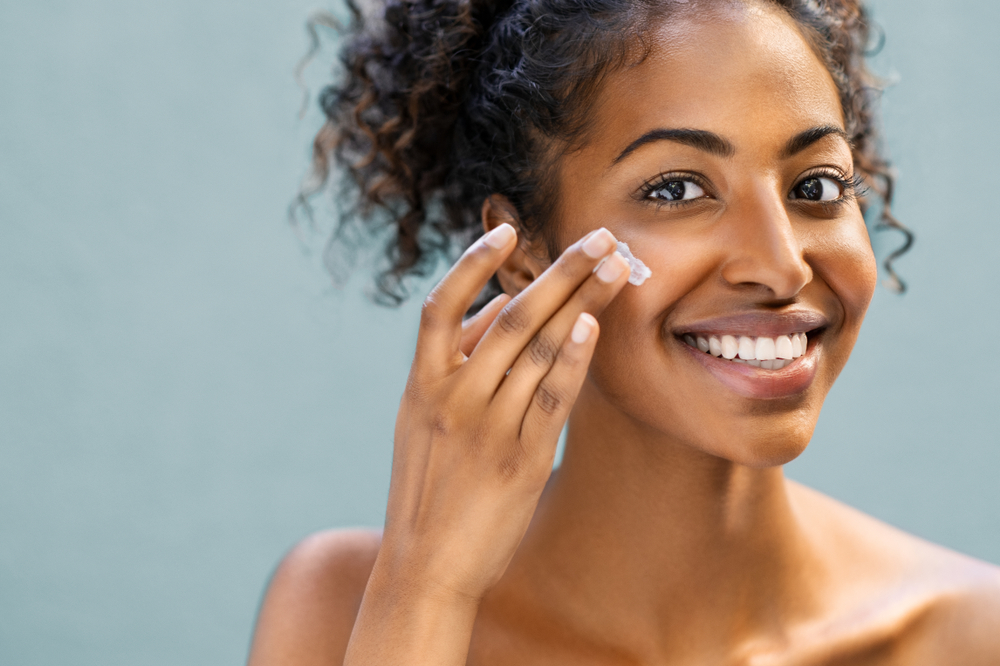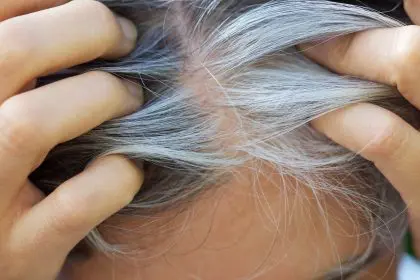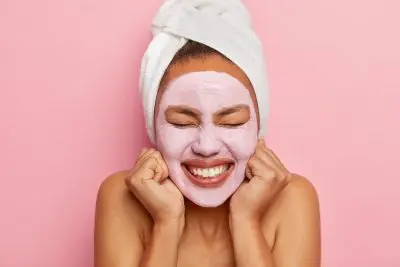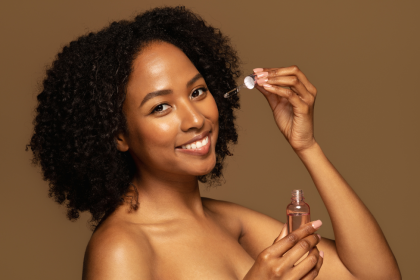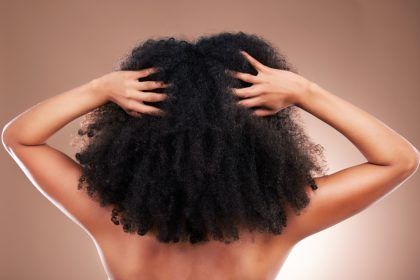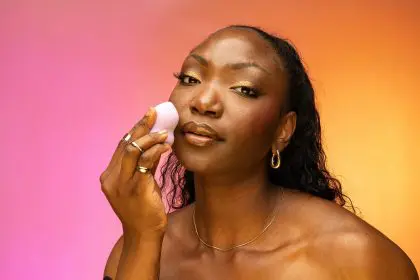That expensive face mask promising magical results might be collecting dust if you could peek inside a dermatologist’s bathroom cabinet. While they have access to the most advanced skincare products on the market, many skin doctors turn to simple ingredients from their own kitchens when their complexions need a boost. These DIY treatments lack the glamorous packaging and marketing hype, but they often deliver better results than their pricey counterparts. The secret lies in the pure, concentrated ingredients that address specific skin concerns without the fillers, preservatives, and potential irritants found in many commercial products. These kitchen-based skin solutions have stood the test of time for good reason, providing benefits that even the most cutting-edge formulations struggle to match.
The breakfast staple that transforms troubled skin
When inflammation and breakouts strike, many dermatologists reach for the same ingredient they put on their morning toast. Plain, unflavored oatmeal transforms into a powerful skin soother when mixed with a small amount of water to create a paste-like consistency.
The science behind oatmeal’s effectiveness lies in its unique compounds. Avenanthramides, found only in oats, have potent anti-inflammatory properties that calm redness and irritation. Meanwhile, saponins provide gentle cleansing by absorbing excess oil and impurities without stripping the skin barrier.
What makes oatmeal particularly valuable is its versatility across skin types. While many acne treatments excessively dry the skin, oatmeal manages to address breakouts while simultaneously strengthening the moisture barrier. This dual action proves especially beneficial for those with combination skin who struggle to find products that address multiple concerns without creating new ones.
Application couldn’t be simpler. Most dermatologists recommend grinding dry oatmeal in a food processor until it reaches a fine powder, then mixing with just enough warm water to create a spreadable consistency. Applied to clean skin for 15-20 minutes before rinsing with lukewarm water, this treatment calms angry skin almost immediately.
For enhanced benefits, some doctors add a teaspoon of raw honey to their oatmeal mixture. This addition brings natural antibacterial properties that address acne-causing bacteria while the honey’s humectant qualities ensure the treatment hydrates rather than dries the skin.
The truly remarkable aspect of oatmeal masks lies in their safety profile. While many active skincare ingredients come with adaptation periods and potential irritation, oatmeal suits even the most sensitive skin conditions, including eczema and rosacea. Many dermatologists recommend it as a rescue treatment when skin reacts negatively to more aggressive products or environmental stressors.
The dairy aisle solution for aging concerns
When fine lines and dullness become concerns, many dermatologists bypass expensive anti-aging creams in favor of a simple yogurt mask. This breakfast staple contains natural lactic acid, a member of the alpha-hydroxy acid family that gently exfoliates while improving moisture retention.
What makes yogurt particularly effective is its perfect pH balance. The natural acidity closely matches the skin’s ideal pH, allowing for effective exfoliation without the irritation that stronger chemical peels might cause. This gentle action makes it suitable for regular use, creating cumulative benefits through consistency rather than intensity.
The live cultures in yogurt provide additional benefits beyond exfoliation. These probiotics help balance the skin’s microbiome, the collection of beneficial bacteria that protect against pathogens and inflammation. Research increasingly shows that a healthy skin microbiome plays a crucial role in preventing premature aging, acne, and sensitivity.
For optimal results, dermatologists typically recommend using plain, full-fat Greek yogurt without added sugars or flavors. The higher protein content in Greek varieties creates a thicker consistency that stays in place during application, while the fat content provides additional moisturizing benefits.
Application involves spreading a thin layer on clean skin and allowing it to remain for 15-20 minutes before rinsing thoroughly. Many skin specialists enhance this basic formula by adding a teaspoon of raw honey for additional hydration or a few drops of lemon juice for increased brightening effects when treating dark spots or uneven tone.
What particularly impresses dermatologists about yogurt masks is the immediate visible improvement. Unlike many anti-aging treatments that require weeks or months to show results, yogurt masks typically provide noticeable luminosity and softness after the first application, with cumulative benefits developing over time with regular use.
The sweet kitchen staple with surprising healing properties
For damaged or dehydrated skin barriers, dermatologists often turn to raw honey, a multitasking ingredient that delivers impressive results without complex formulations. This natural substance contains over 180 beneficial compounds and works through multiple mechanisms to improve skin health.
The exceptional humectant properties of honey explain its primary benefit. Unlike many moisturizing ingredients that simply sit on the skin’s surface, honey actively draws moisture from the air into the skin, effectively hydrating even severely parched complexions. This hygroscopic quality makes it particularly valuable during dry winter months or after sun exposure.
Beyond hydration, honey provides gentle enzymatic exfoliation through natural enzymes like glucose oxidase. These enzymes break down dead skin cells without the abrasiveness of scrubs or the potential irritation of stronger chemical exfoliants. This action reveals fresher cells underneath while promoting cell turnover for improved texture and clarity.
Perhaps most impressively, honey creates an antimicrobial environment through its unique chemical properties. The combination of low moisture content, slight acidity, and the presence of hydrogen peroxide-producing compounds creates conditions where harmful bacteria cannot thrive. This makes honey particularly useful for acne-prone skin that needs hydration without increased breakouts.
For maximum benefits, dermatologists emphasize the importance of using raw, unpasteurized honey, as the heating process in regular commercial varieties destroys many of the beneficial enzymes and antioxidants. Manuka honey offers enhanced antimicrobial benefits, though its significantly higher cost isn’t strictly necessary for basic skin treatments.
Application remains straightforward. A thin layer applied to clean, slightly damp skin for 15-20 minutes provides optimal results before rinsing with warm water. For severely dehydrated skin, some dermatologists recommend leaving a thin film of honey on the skin overnight, particularly in dry environments where additional hydration is beneficial.
The versatility of honey extends beyond face masks. Many dermatologists also recommend it for dry lips, minor cuts or burns, and irritated cuticles, making it a true multi-purpose skin remedy with applications beyond basic skincare routines.
The fruit acid treatment that rivals professional peels
When uneven skin tone and stubborn dark spots require intervention, many dermatologists turn to papaya as a natural alternative to chemical peels. This tropical fruit contains papain, a powerful enzyme that dissolves dead skin cells and promotes cellular turnover without harsh chemicals.
The unique advantage of papaya lies in its selective action. The enzymes break down only dead proteins while leaving living tissue untouched, creating an exceptionally gentle yet effective exfoliation. This selectivity makes papaya suitable even for sensitive skin types that cannot tolerate traditional chemical exfoliants.
Beyond enzymatic action, papaya contains significant amounts of vitamins A, C and E, providing antioxidant protection while brightening skin tone. The vitamin C component proves particularly valuable for addressing hyperpigmentation by inhibiting the enzyme tyrosinase that triggers melanin production, gradually fading dark spots with consistent use.
For optimal results, dermatologists recommend using fully ripe papaya, as the enzyme concentration peaks at this stage. The application involves mashing a quarter cup of fresh papaya into a smooth paste, sometimes with the addition of a teaspoon of honey for enhanced hydration or plain yogurt for additional gentle acid exfoliation.
The paste should remain on clean skin for 10-15 minutes, though many dermatologists caution against leaving it longer as the powerful enzymes can occasionally cause tingling or sensitivity if overused. Thorough rinsing with lukewarm water removes all residue before applying regular skincare products.
What impresses skin specialists about papaya treatments is their progressive effectiveness. While a single application creates noticeable luminosity, the consistent weekly use over several months can produce dramatic improvements in hyperpigmentation and overall skin clarity that rival professional treatments.
The overlooked pantry staple for congested pores
When clogged pores and excess oil become problematic, many dermatologists bypass harsh clay masks in favor of a simpler solution. Plain rice flour mixed with water or rose water creates an effective yet gentle treatment for congestion without the excessive drying that commercial products often cause.
The fine particulate nature of rice flour provides mild physical exfoliation that removes surface debris without the microtears caused by harsher scrubs. Additionally, rice contains natural compounds like ferulic acid and allantoin that soothe inflammation while helping to control excess sebum production.
What makes rice flour particularly valuable is its oil-absorbing capability without the intense drying action of traditional clay masks. This balanced approach prevents the rebound oil production that often occurs after treatments that strip the skin too aggressively, making it suitable for regular use without disrupting the skin’s natural balance.
For optimal results, dermatologists typically recommend mixing two tablespoons of rice flour with enough liquid to create a spreadable paste. Adding a teaspoon of raw honey enhances the mask’s hydrating properties, while a few drops of tea tree oil provides additional antibacterial benefits for acne-prone skin.
The paste should be applied to clean skin and allowed to partially dry, approximately 15 minutes, before gently massaging with wet fingertips and rinsing thoroughly. This brief massage during removal provides additional mild exfoliation that enhances the treatment’s effectiveness.
Many dermatologists praise rice flour masks for their ability to refine pore appearance without irritation, making them appropriate even for sensitive skin types that cannot tolerate traditional acne-focused products. The gentle nature allows for frequent application, with twice-weekly treatments typically providing optimal results for congestion-prone complexions.
Bringing professional wisdom to your bathroom
While these simple ingredients offer powerful benefits independently, dermatologists often employ strategic combinations and application techniques that maximize results while minimizing potential irritation. These professional insights transform basic kitchen ingredients into truly effective skincare treatments.
Layering treatments strategically enhances outcomes without overwhelming the skin. For example, applying a honey mask after a yogurt treatment provides hydration that counterbalances the exfoliating effects of lactic acid. Similarly, following a papaya enzyme treatment with an oatmeal mask helps calm any potential reactivity from the fruit enzymes.
Timing applications around your skin’s natural rhythm improves efficacy. Many dermatologists recommend exfoliating treatments like yogurt or papaya masks in the evening when the skin’s repair mechanisms are most active. Conversely, antioxidant-rich treatments work best in the morning to provide environmental protection throughout the day.
Temperature modifications can significantly impact a mask’s effectiveness. Slightly warming honey before application enhances penetration and spreadability, while chilled yogurt provides additional anti-inflammatory benefits that help reduce puffiness and redness. These simple adjustments require no additional ingredients yet meaningfully improve results.
Frequency adjustments based on seasonal changes maintain optimal skin health. During drier winter months, hydrating masks like honey might be used more frequently, while enzymatic exfoliation with papaya might increase during summer when cell turnover typically accelerates and skin congestion becomes more problematic.
Storage techniques preserve ingredient efficacy. Many dermatologists recommend preparing larger batches of dry ingredients like oatmeal powder or rice flour to save time, but stress the importance of mixing with wet ingredients immediately before application to ensure maximum potency of active compounds.
This professional context transforms simple ingredients into sophisticated treatments that rival or exceed their commercial counterparts. The real secret behind these dermatologist-approved DIY masks isn’t just the ingredients themselves but the strategic application that maximizes their natural benefits.
When to DIY and when to see a professional
While these natural treatments provide remarkable benefits for many common skin concerns, dermatologists emphasize the importance of understanding their limitations and recognizing when professional intervention becomes necessary.
DIY masks excel at maintaining healthy skin and addressing minor concerns like occasional breakouts, dullness, or mild dryness. Their gentle nature makes them ideal for regular maintenance between professional treatments or as introductory skincare for those new to active ingredients.
However, persistent or severe skin conditions require medical evaluation. Cystic acne, rosacea, severe hyperpigmentation, or dramatic changes in skin appearance signal the need for dermatological assessment rather than home remedies, regardless of how natural or well-formulated they might be.
The beauty of these dermatologist-approved DIY approaches lies in their complementary relationship with professional care. Many skin specialists actually recommend these gentle natural treatments as adjuncts to prescribed regimens, providing nurturing support while medical interventions address underlying conditions.
By understanding both the power and limitations of kitchen-based skincare, you can make informed choices about when to reach for the honey and when to schedule an appointment. This balanced approach often yields the best outcomes, combining the gentle wisdom of traditional ingredients with the precision of modern dermatological science when necessary.

